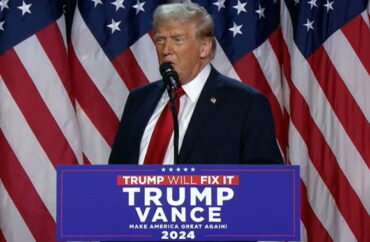Here’s everything Trump promised regarding higher ed reform during his campaign – The College Fix

Trump’s Promises for Higher Education Reform

During his presidential campaign, Donald Trump made several promises regarding higher education reform. With his election as the 47th president of the United States, these campaign promises may soon become a reality. This report will outline the key reforms Trump pledged to make and their potential impact on the education system.
Reforming the Education Department
One of the major reforms Trump touted was the elimination of the U.S. Department of Education. He expressed his intention to shut down the federal department and transfer its responsibilities back to the states. Trump believed that individualizing education and allowing states to have more control would lead to better outcomes for students.
Addressing Leftist Bias in Accreditation
Trump also pledged to address leftist bias within accreditation processes. He criticized the accreditation system for mandating diversity, equity, and inclusion programming as a condition of approval. His campaign stated that he would impose real standards on American colleges and universities, defending the American tradition and Western civilization, protecting free speech, and eliminating wasteful administrative positions.
Combating Antisemitism and Racial Discrimination
Trump expressed his commitment to combating antisemitism on campuses. He mentioned using accreditation to enforce stronger protections for Jewish students. Additionally, he promised to direct the Justice Department to pursue federal civil rights cases against universities that engage in racial discrimination. Schools persisting in explicit unlawful discrimination may face fines.
Protecting Women’s Sports
Trump emphasized his support for protecting women’s sports and stated his opposition to allowing men to compete in women’s sports. He aimed to ensure fairness and maintain the integrity of women’s athletic competitions.
Affordable Postsecondary Alternatives and Online College
Trump’s platform called for more affordable postsecondary alternatives to traditional four-year degrees. He proposed the creation of a free online college funded through a tax on large private university endowments. This online college, known as the “American Academy,” would allow students to transfer previous coursework and would not tolerate what Trump referred to as “wokeness” – a conservative complaint about traditional colleges.
Impact on Sustainable Development Goals
Trump’s proposed reforms align with several of the United Nations’ Sustainable Development Goals (SDGs). By emphasizing individualized education, defending free speech, and promoting fairness in sports, these reforms contribute to SDG 4: Quality Education. Furthermore, by addressing bias and discrimination, Trump’s reforms support SDG 10: Reduced Inequalities.
Overall, Trump’s promises for higher education reform have the potential to significantly impact the education system in the United States. They align with the Sustainable Development Goals and aim to address various challenges and concerns within the current system.
Sources:
- Donald J. Trump’s Campaign Agenda
- The College Fix: Trump pledges to ‘shut down’ U.S. Education Department if reelected
- Inside Higher Ed: What the 2024 Election Means for Higher Education
- Higher Ed Dive: Where the 2024 Presidential Candidates Stand on Higher Education Issues
IMAGE: Fox News YouTube screenshot
Like The College Fix on Facebook / Follow us on Twitter
SDGs, Targets, and Indicators
1. Which SDGs are addressed or connected to the issues highlighted in the article?
- SDG 4: Quality Education
- SDG 5: Gender Equality
- SDG 10: Reduced Inequalities
- SDG 16: Peace, Justice, and Strong Institutions
2. What specific targets under those SDGs can be identified based on the article’s content?
- SDG 4.7: By 2030, ensure that all learners acquire the knowledge and skills needed to promote sustainable development, including among others through education for sustainable development and sustainable lifestyles.
- SDG 5.5: Ensure women’s full and effective participation and equal opportunities for leadership at all levels of decision-making in political, economic, and public life.
- SDG 10.2: By 2030, empower and promote the social, economic, and political inclusion of all, irrespective of age, sex, disability, race, ethnicity, origin, religion, or economic or other status.
- SDG 16.7: Ensure responsive, inclusive, participatory, and representative decision-making at all levels.
3. Are there any indicators mentioned or implied in the article that can be used to measure progress towards the identified targets?
- Indicator for SDG 4.7: Presence of policies and programs that promote education for sustainable development and sustainable lifestyles in educational institutions.
- Indicator for SDG 5.5: Proportion of women in leadership positions in educational institutions.
- Indicator for SDG 10.2: Proportion of students from marginalized groups enrolled in educational institutions.
- Indicator for SDG 16.7: Existence and effectiveness of mechanisms for public participation in decision-making processes in educational institutions.
SDGs, Targets, and Indicators
| SDGs | Targets | Indicators |
|---|---|---|
| SDG 4: Quality Education | 4.7: By 2030, ensure that all learners acquire the knowledge and skills needed to promote sustainable development, including among others through education for sustainable development and sustainable lifestyles. | Presence of policies and programs that promote education for sustainable development and sustainable lifestyles in educational institutions. |
| SDG 5: Gender Equality | 5.5: Ensure women’s full and effective participation and equal opportunities for leadership at all levels of decision-making in political, economic, and public life. | Proportion of women in leadership positions in educational institutions. |
| SDG 10: Reduced Inequalities | 10.2: By 2030, empower and promote the social, economic, and political inclusion of all, irrespective of age, sex, disability, race, ethnicity, origin, religion, or economic or other status. | Proportion of students from marginalized groups enrolled in educational institutions. |
| SDG 16: Peace, Justice, and Strong Institutions | 16.7: Ensure responsive, inclusive, participatory, and representative decision-making at all levels. | Existence and effectiveness of mechanisms for public participation in decision-making processes in educational institutions. |
Source: thecollegefix.com








